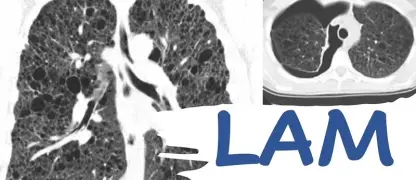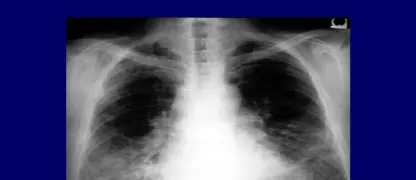Don't dismiss persistent shortness of breath or a dry, hacking cough. Understanding pulmonary fibrosis, a serious lung scarring condition, is vital. Knowing the signs can lead to an earlier diagnosis, which is key to managing the disease and improving quality of life.
What are the main causes of Pulmonary Fibrosis?
- The main causes of pulmonary fibrosis include long-term exposure to certain environmental toxins and pollutants, such as asbestos fibers, silica dust, or grain dust.
- Certain medical conditions, like autoimmune diseases such as rheumatoid arthritis, and some radiation or chemotherapy treatments can also lead to lung scarring over time.
- In many cases, the cause is unknown, a condition called idiopathic pulmonary fibrosis (IPF), which is the most common type of this disease.

Key symptoms of Pulmonary Fibrosis to watch for
- The most common pulmonary fibrosis symptoms are progressive shortness of breath, especially during physical activity, and a persistent, dry, hacking cough that does not resolve.
- Other signs include profound fatigue, unexplained weight loss, aching in the muscles and joints, and a widening of the fingertips, known as finger clubbing.
- These IPF symptoms often develop slowly, which can sometimes delay a formal pulmonary fibrosis diagnosis until the disease has progressed to more advanced stages.
How is Pulmonary Fibrosis Managed?
- While it is not curable, pulmonary fibrosis treatment focuses on slowing the disease's progression with antifibrotic medications and managing symptoms through oxygen therapy.
- Pulmonary rehabilitation programs are crucial, teaching breathing techniques, exercise strategies, and nutritional counseling to help improve daily functioning and overall quality of life.
- In the advanced stages of pulmonary fibrosis, a lung transplant may be considered as a viable option to improve life expectancy for eligible candidates.
>>> See more: Asthma - Understanding your triggers and treatment options
Illustrated Images of the Pulmonary Fibrosis

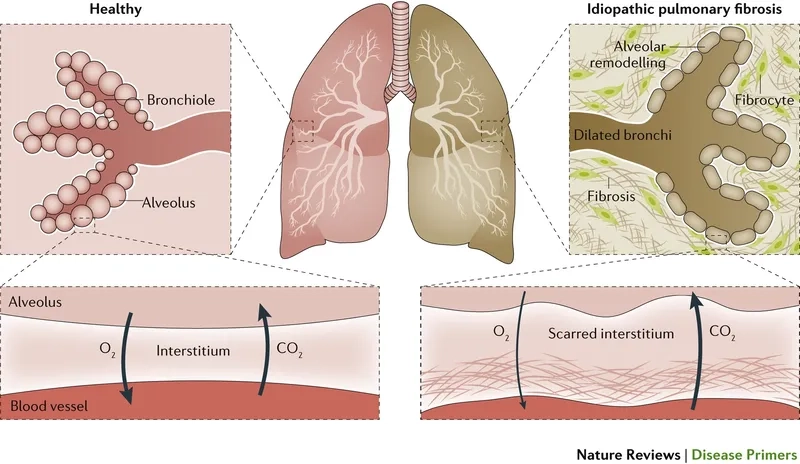

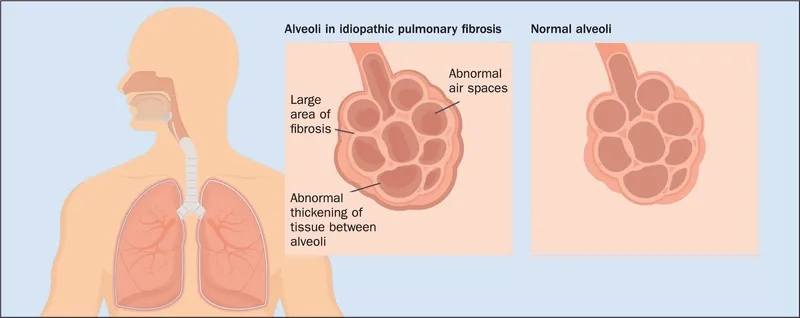

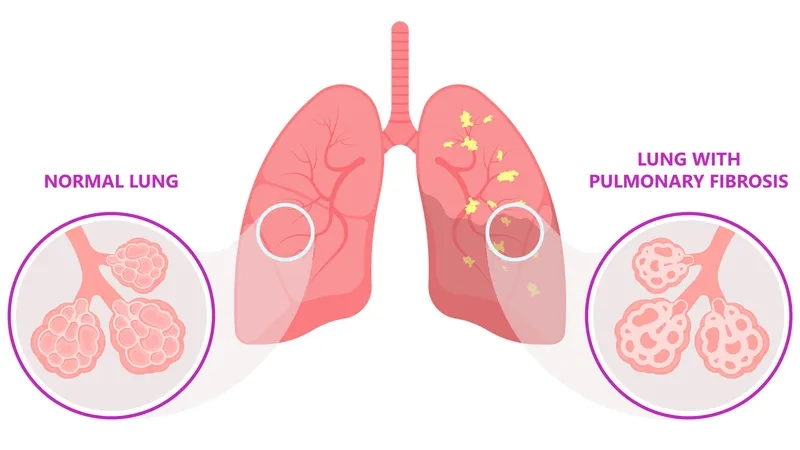
>>> Don't miss: Emphysema - How to manage symptoms and improve your breathing
Early diagnosis and a comprehensive management plan are essential for slowing the progression of pulmonary fibrosis. If you are experiencing persistent shortness of breath or a chronic dry cough, consult a pulmonologist for a thorough evaluation and to discuss your options.
>>> Unknown more: Chronic bronchitis - The difference between acute and chronic


